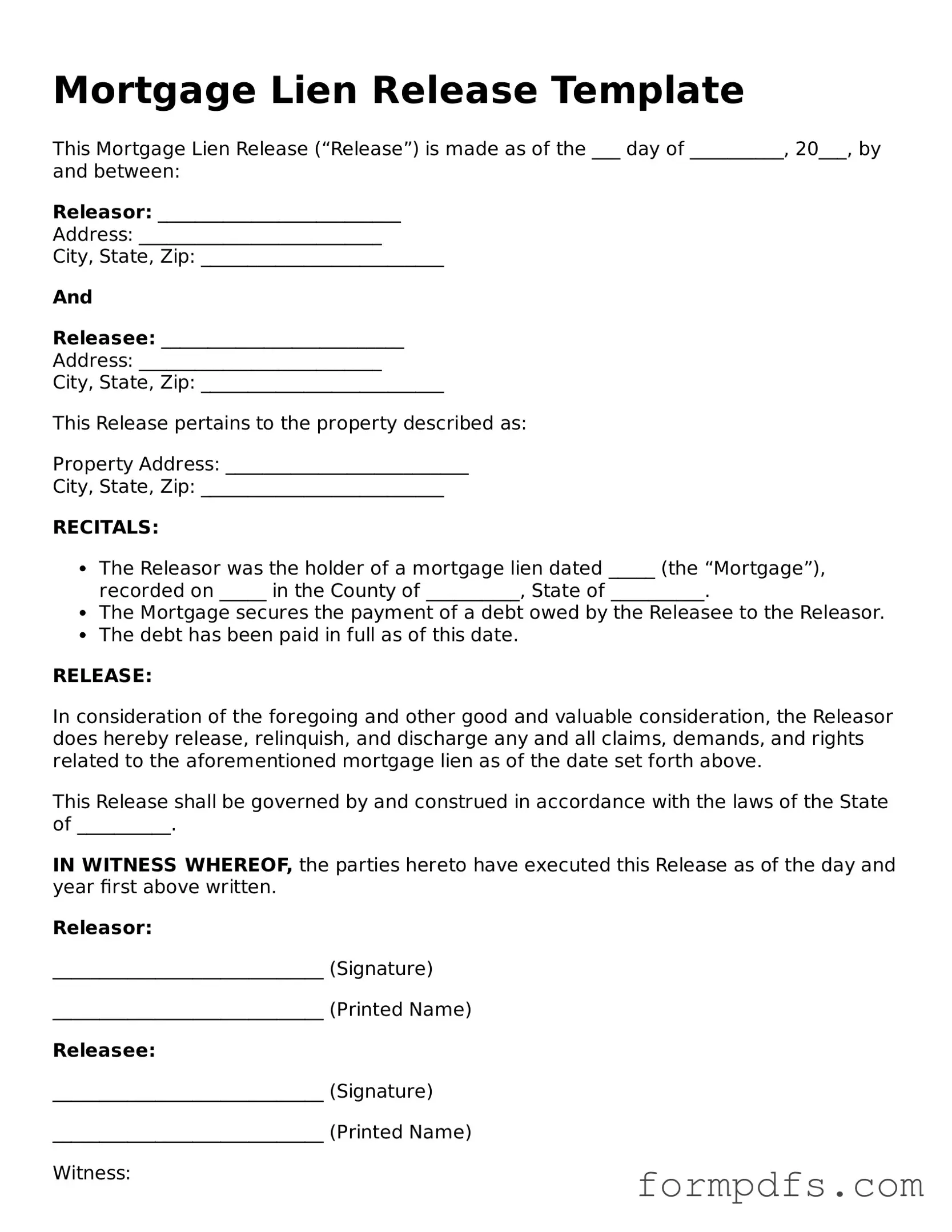Valid Mortgage Lien Release Template
The Mortgage Lien Release form is a legal document that formally removes a lender's claim on a property once a mortgage has been paid off. This release is essential for homeowners, as it clears the title of the property and confirms that the debt has been satisfied. To ensure your property records are accurate, consider filling out the form by clicking the button below.
Open Mortgage Lien Release Editor
